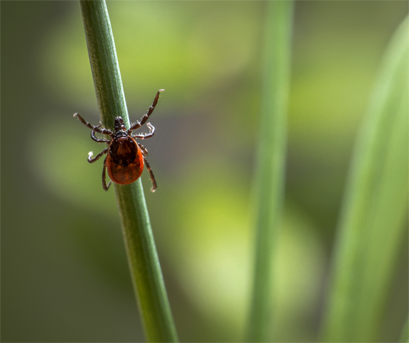Tick Season in MN
July 1, 2021
In Minnesota, out of the dozen different types of ticks, three are known to cause disease, most commonly Lyme disease.
A tick lives on average two to three years spending most of its time out in the environment of grassy and wooded areas. During their lifetime, a tick will only have up to three meals. A tick looks for “hosts” to attach to for a few days to feed off their blood.
In order for a tick to spread disease, it first must be infected with the bacteria that causes Lyme disease or some of the other less common tick-borne illnesses. The good news is only about one in four deer ticks are infected with the bacteria. An infected tick typically must be attached between 24-48 hours in order to transmit Lyme disease. It can be less time for other tick-borne illnesses.
The bad news is Lyme disease is a serious condition and according to the MN Department of Health, new cases of Lyme disease have been increasing over the last few years. The symptoms of the disease vary and appear in stages, usually starting with a small red bump and then a bullseye rash that appears three to thirty days after infection.
There is a treatment for Lyme disease but it is more effective the earlier you start it.
Whenever you spend time outdoors in or near tall grass and heavily wooded areas it is best to inspect your clothes immediately afterward and your body closely. Look carefully as some of the deer ticks can be as small as a sesame seed. They often attach low to the ground and climb higher to find somewhere to latch on to.
Other ways to protect yourself from ticks include: wearing insect repellent that contains DEET, tumble dry clothing on high heat for at least 10 minutes to kill ticks, and protect your pets with tick treatments and inspect them closely for ticks as well. Pets can bring ticks to you.
Adult deer ticks are most active in the Spring (April – June) and Fall (September – November). Immature nymph deer ticks are most active from mid-May through mid-July.
If you find a tick biting you, use fine-tipped tweezers to grasp the tick as close to the skin’s surface as possible. Pull upward with steady, even pressure. After removing the tick, thoroughly clean the bite area and your hands with rubbing alcohol or soap and water.
